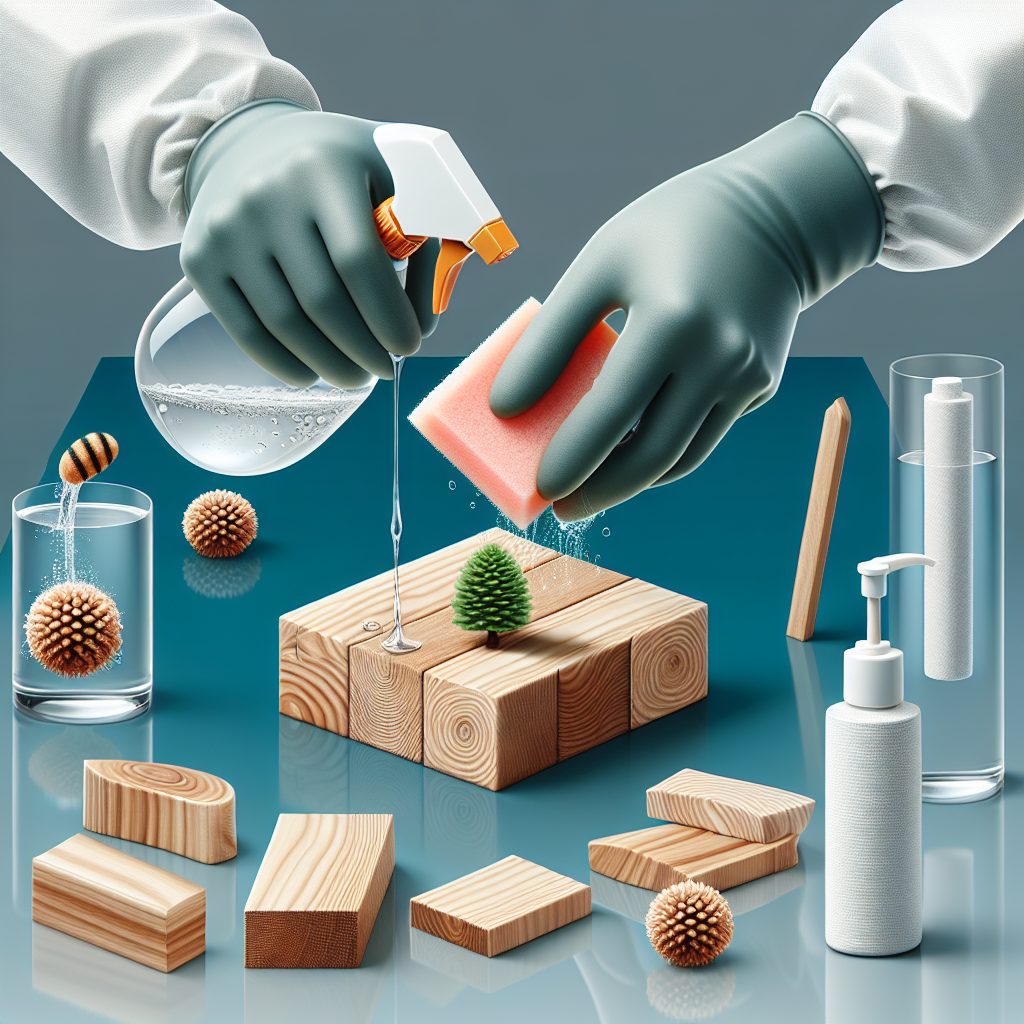When it comes to keeping our homes clean and hygienic, one common question that arises is: How do you sanitize wood? Wood surfaces can be a breeding ground for bacteria and germs if not properly cleaned and sanitized. This is especially important for cutting boards, countertops, and furniture made from wood, as they come into direct contact with food and other items on a daily basis.
Sanitizing wood involves more than just a simple wipe down with soap and water. Wood is a porous material, which means that bacteria can seep into the surface if not properly cleaned. In the upcoming sections of this article, we will discuss the key takeaways on how to effectively sanitize wood surfaces to ensure a clean and germ-free environment in your home. Let’s dive into the best practices and products for sanitizing wood to keep your living spaces safe and healthy.
Key Takeaways
1. Use a solution of bleach diluted in water to sanitize wood surfaces, making sure to follow proper safety precautions and thoroughly rinse the area after cleaning.
2. For wooden cutting boards and utensils, consider applying a mixture of hydrogen peroxide and vinegar to effectively kill bacteria and viruses.
3. For wooden furniture or flooring, opt for a commercial wood cleaner that contains disinfectant properties to ensure a deep clean without damaging the wood.
4. Regularly sanitize high-touch wooden surfaces in your home, such as door handles, countertops, and tables, to prevent the spread of germs and bacteria.
5. When sanitizing wood, always follow manufacturer’s guidelines to avoid potential damage and maintain the longevity of the material.
Methods for Sanitizing Wood
1. Use a Disinfectant Spray
One of the easiest ways to sanitize wood surfaces is by using a disinfectant spray. Look for a spray that is safe for use on wood and follow the instructions on the label for the best results. Make sure to let the spray sit on the surface for the recommended amount of time before wiping it off.
2. Create a Vinegar Solution
Vinegar is a natural disinfectant and can be an effective way to sanitize wood. Mix equal parts water and white vinegar in a spray bottle and spray it onto the wood surface. Let it sit for a few minutes before wiping it off with a clean cloth.
3. Use a Steam Cleaner
A steam cleaner can be a great tool for sanitizing wood surfaces, especially in areas where germs and bacteria are a concern. Just make sure to use the steam cleaner according to the manufacturer’s instructions to avoid damaging the wood.
4. Apply a Wood-Safe Sanitizing Solution
There are several wood-safe sanitizing solutions available on the market that are specifically designed to clean and disinfect wood surfaces. These solutions are safe to use on most types of wood and can be an effective way to ensure your wood is free of germs and bacteria.
Tips for Sanitizing Wood
1. Always test a small, inconspicuous area of the wood before applying any sanitizing solution to the entire surface.
2. Avoid using harsh chemicals or abrasive cleaners on wood, as they can damage the finish and wood itself.
3. Make sure to thoroughly dry the wood surface after sanitizing to prevent any water damage or warping.
4. Regularly sanitize high-touch areas of wood surfaces, such as door handles, countertops, and tables, to prevent the spread of germs and bacteria.
FAQs
Can you sanitize wood?
Yes, you can sanitize wood by using a solution of bleach and water. Mix one part bleach with nine parts water to create a sanitizing solution. Apply the solution to the wood surface and let it sit for a few minutes before wiping it off.
How often should you sanitize wood surfaces?
It is recommended to sanitize wood surfaces regularly, especially in high-traffic areas or surfaces that come into contact with food. Depending on usage, sanitizing wood surfaces once a week may be sufficient.
Are there natural alternatives to bleach for sanitizing wood?
Yes, there are natural alternatives to bleach for sanitizing wood. Vinegar and hydrogen peroxide are effective natural sanitizers that can be used on wood surfaces. Mix either vinegar or hydrogen peroxide with water and apply it to the wood surface for sanitization.
Can essential oils be used to sanitize wood?
Yes, some essential oils have antimicrobial properties that can help sanitize wood surfaces. Tea tree oil, eucalyptus oil, and thyme oil are known for their antibacterial properties and can be diluted with water to create a wood-safe sanitizer.
Does sanding wood sanitize it?
Sanding wood can help remove surface contaminants and bacteria, but it may not fully sanitize the wood. It is recommended to combine sanding with a sanitizing solution for thorough wood sanitization.
Final Thoughts
When it comes to sanitizing wood, it is important to choose the right method based on the type of wood and its intended use. Regular sanitization of wood surfaces can help maintain cleanliness and prevent the spread of germs. Whether using bleach, natural alternatives, or essential oils, taking the time to sanitize wood can contribute to a healthier living environment.
Remember to always follow safety guidelines when working with sanitizing chemicals and test a small area of the wood surface before applying the solution to the entire surface. By incorporating regular wood sanitization into your cleaning routine, you can keep your living spaces clean and healthy.
